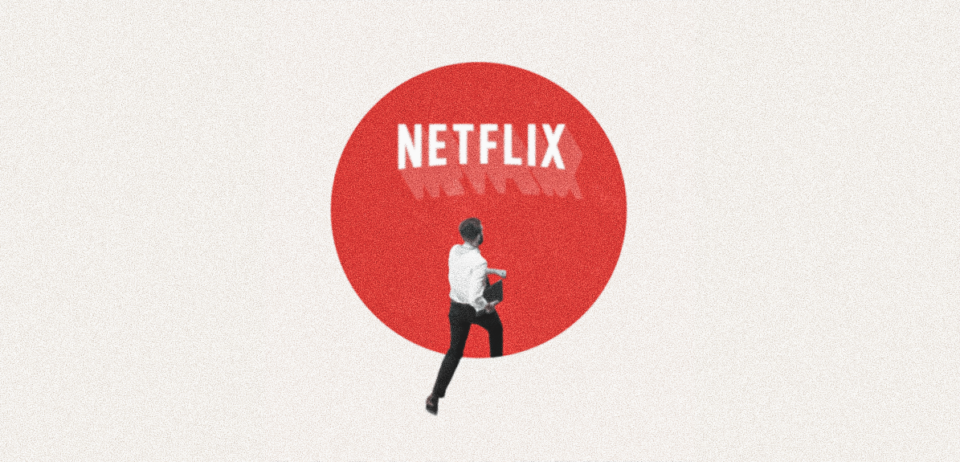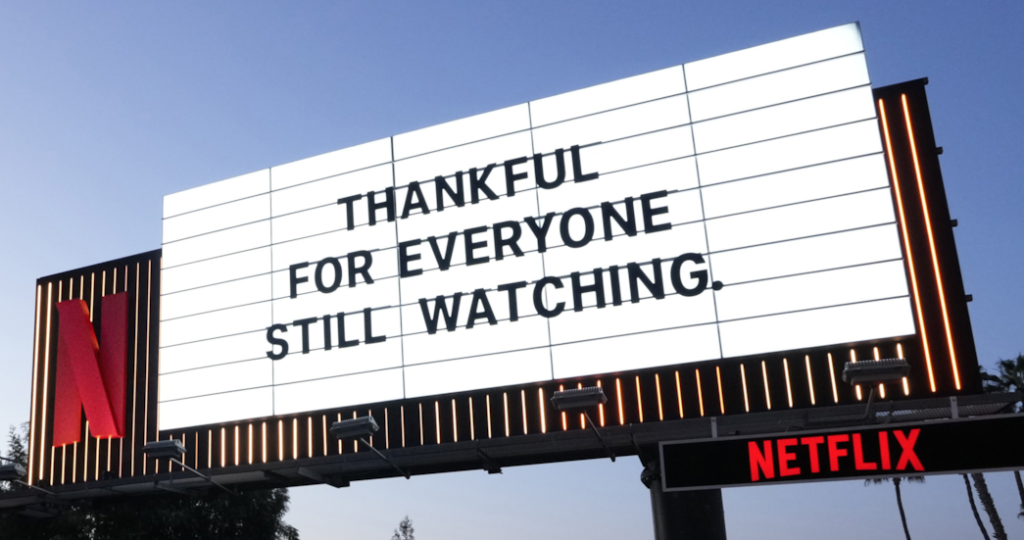
Anti-marketing Habit Could Become a Reason for Netflix’s Slow Growth
‘Netflix & Chill’ is what every binge-watcher does. The slogan became popular, and so did the streaming channel in the global market. In 2024, it’s growing exponentially for investors in stock markets, with ad supported as well as non-ad premium subscriptions. However, Netflix’s slow growth in Q3 of 2024 seems surprising. Netflix reported 5.1 million new subscribers in Q3 of 2024, lower than last year’s Q3, which was 8.8 million. Why?
For one, Netflix’s anti-marketing approach is piling up frustration. From unpredictable show cancellations to cracking down on password sharing, Netflix seems determined to test everyone’s patience. Moreover, the company rarely invests in promoting its latest shows, leaving fans scrambling to find out what’s even new on the platform.
Producers and marketers are sounding off, too, echoing viewers’ frustrations. Netflix’s self-sabotaging attitude toward marketing is raising eyebrows across the marketing industry. Let’s dive deep into Netflix’s anti-marketing attitude, which is a cyclical problem.
For Netflix, cash rules, but where’s the content love?
Netflix may be the global streaming king with 282.72 million paid subscribers as of Q3 2024—a 14.4% jump from last year. With a revenue growth of 15% year-over-year, Netflix’s numbers are impressive. It boasts a broader subscriber base than competitors like Amazon Prime and Disney+, making it a clear winner on the financial front. But when it comes to content? Well, that’s another story.
Netflix’s catalog might technically be growing, with 124 original titles this year, but where’s the excitement? Older licensed titles like F.R.I.E.N.D.S. or Fast & Furious still attract viewers, yet Netflix’s approach to originals could be more varied. They’re producing content by numbers but only bother to market it beyond a few scattered billboards or fan favorites like Stranger Things.

The real itch here? Netflix seems stubbornly opposed to giving its content lineup the promotional push it deserves. While it rolls out announcements, it leaves fans scrambling to find what’s new or worth watching. In Los Angeles, you might see a Netflix billboard here or there — but it’s likely for an already-established hit rather than promoting fresh titles to a broader audience.
When it comes to marketing muscle, Netflix is actually in a league of its own, without the robust backing of an in-house film studio or a corporate powerhouse like Amazon. Disney+ has a built-in edge; it’s the natural streaming home for colossal franchises like Star Wars and Marvel—both guaranteed to draw audiences. The theatrical releases of The Mandalorian and Marvel movies create instant traction on Disney+, making it a seamless transition for subscribers who already know and love the content.
Amazon Prime, meanwhile, is buoyed by its parent company’s global reach and massive marketing budget, allowing it to heavily promote select originals like The Lord of the Rings: The Rings of Power. With fewer originals, Amazon is able to funnel more resources into just a few, leveraging Amazon’s established ecosystem and retail empire to make Prime Video a valuable add-on.
Netflix, on the other hand, must fight to keep each new release in the spotlight and in the minds of its audience. Without a studio-level production arm or a retail giant to lean on, Netflix has to be both strategic and bold to break through the noise.
With so much untapped potential for marketing, analysts and fans alike are left wondering: How long can Netflix’s “content, what content?” approach keep working? If it’s just about stacking bills without connecting with audiences, that winning streak might not be as exciting as it looks on paper.
Netflix adopts a ‘watch or be canceled’ attitude while forgetting to market new shows
It’s a familiar scene for Netflix fans: a promising show with a unique premise, beloved cast, and dedicated fanbase gets axed before it can finish its story.
Case in point: Kaos, the mythological comedy starring Jeff Goldblum and crafted by End of the F**ing World* creator Charlie Covell, got the chop despite decent numbers (14.9 million views in its first four weeks). For Netflix, that viewership didn’t meet its internal renewal metrics, so Kaos is gone.

And it’s not the first time—Mindhunter, Shadow and Bone, The OA, and Tuca & Bertie were all victims of this high-speed streaming treadmill.
The issue? Netflix’s viewership model expects audiences to binge a series fast enough to hit the platform’s renewal benchmarks. But here’s the catch: how should people flock to these shows when many haven’t heard of them?
Netflix often drops a dozen originals, promotes just one or none, and relies on its infamous algorithm to do the heavy lifting. With little to no marketing push, viewers are left in the dark, leading many shows to stumble without getting the attention they deserve.
The lack of promotion creates a cycle where under-the-radar series get buried, fail to meet viewership demands and end up canceled. Once upon a time, Netflix was the “chill” streaming service known for letting fans savor content at their own pace. Now, it’s like being told to speed binge or say goodbye.
At this rate, Netflix’s “anti-marketing” stance might keep racking up numbers. Still, it’s leaving its audience (and creators) with unfinished stories and a sense that the platform is more about rapid turnover than relaxed, immersive storytelling.
Netflix needs to grow up with its algorithm game
Netflix might be one of the most data-driven companies, but it still acts like YouTube with repetitive recommendations. Watch The Witcher? Brace yourself for a barrage of other lore-heavy or mythological shows. Stray out of that loop, and you’re back to square one, sifting through endless rows of “top picks” that don’t feel so unique.
The irony? Netflix could easily use that same powerful algorithm to spotlight underrated series that risk getting canceled due to low views. Imagine a world where, instead of feeding viewers the prominent shows, Netflix surfaces hidden gems based on users’ actual viewing habits, not just the broad genre. This tweak could shift the cancel culture cycle, giving under-the-radar series a fighting chance.
But Netflix’s algorithm isn’t doing enough to nurture diverse viewership, and it’s high time the platform rethought its strategy.
Netflix has the potential to revolutionize streaming marketing
That would be possible only if Netflix ditched the marketing snooze button. Right now, their strategy feels like a sleepy checklist:
- Announce the show.
- Sprinkle a few teasers.
- Wait until release day till it becomes a phenomenon for any further push.
But there’s a more engaging playbook out there—one that’s proven and theatrical. Think movie studios that meticulously plan press tours, red-carpet events, cast interviews, and fan interactions. Netflix has all the power to generate this kind of buzz, bringing its star casts and aesthetic appeal front and center—if not for every show, then at least for those that deserve the spotlight!

Netflix could shift gears on social media by running vibrant, targeted campaigns each quarter. Instead of rehashing the same Stranger Things clip for the 100th time, it could go bold with influencer partnerships, interactive content on social media, or virtual events. And traditional advertising? Think of it as an art form: quirky billboards, intriguing teasers, mysterious posters that spark genuine curiosity.
Of course, we’re asking for only some of the 7,000+ shows to get this treatment. But Netflix has to start somewhere. Giving just a handful of its fresh titles a proper marketing push could be enough to spark the streaming game’s next significant evolution.
Cut to the chase
Netflix’s anti-marketing attitude will cost the company in the long run, even if the impact is slow and negligible. With cancellations, password crackdowns, ad-supported tiers, and now the removal of interactive titles from the site, Netflix seems unwilling to address the underlying problems.

